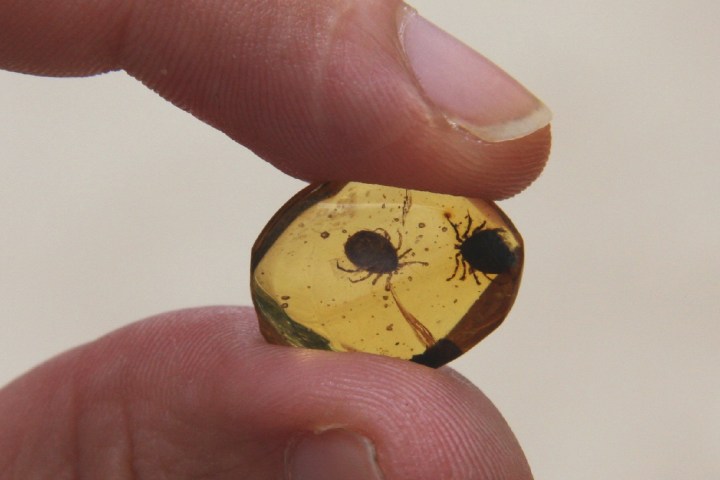
“That ticks sucked the blood of dinosaurs had been previously hypothesized, but never before a fossil tick had been found associated to remains of its host,” researcher Dr. Ricardo Pérez-de la Fuente, from the Oxford University Museum of Natural History, told Digital Trends. “Although we cannot know the exact type of feathered dinosaur that ticks were parasitizing, modern birds can be ruled out because they appeared about 25 million years later than the age of Burmese amber following current molecular and paleontological evidence.”
The ancient tick found by the researchers, named Deinocroton draculi, or “Dracula’s terrible tick”, is very different from almost any living tick. The fossil records are very poor when it comes to specimens of this species, and the researchers hope that the discovery will help plug some important knowledge gaps.
Sadly, what it won’t be doing is leading to dinosaurs walking the Earth once more. “So far, and using modern techniques, extracting coherently preserved genetic material from inclusions preserved in amber has proven impossible,” Enrique Peñalver, a researcher from Museo Geominero in Spain, told Digital Trends. “DNA is a very fragile molecule, and even in ideal conditions, it is destroyed before 1 million years. For that reason, scientists think that it cannot be preserved in any amber. An additional — but certainly not minor — problem would be that we cannot use dinosaur ovules for cloning. Ovules contain very complex information key for the development of the embryo, and there are no suitable ovules among the extant biota that can be used to clone the ancient dinosaur DNA.”
On this occasion it seems that life, unfortunately, won’t find a way.


